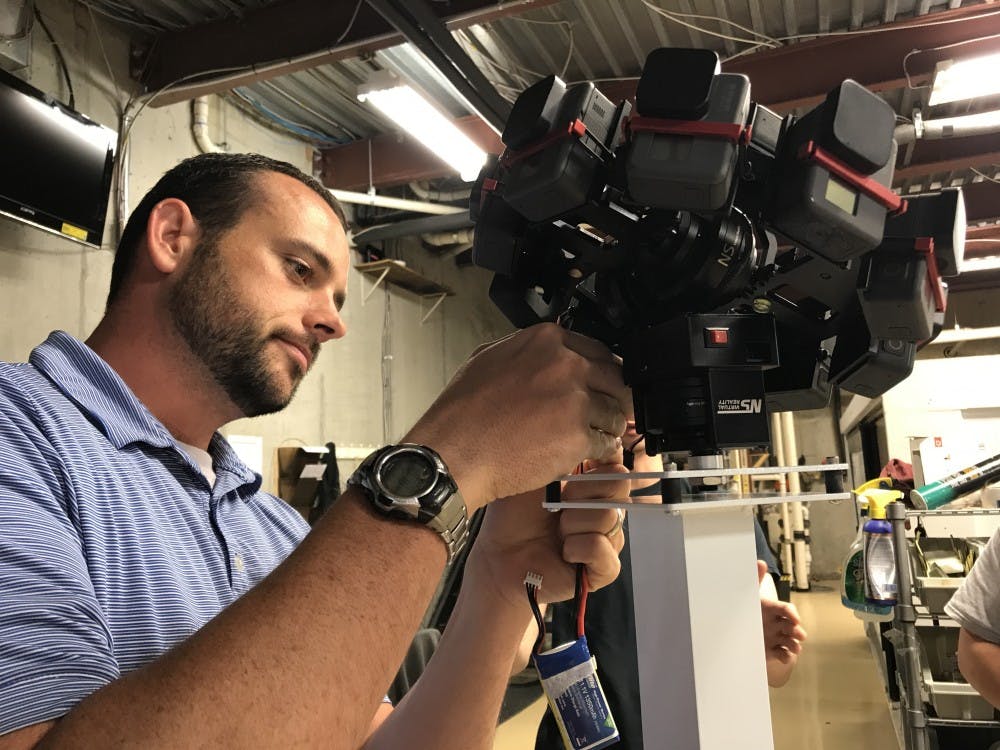DuCille isn't just your average video journalist. This remote-controlled robot, named after the late Washington Post photographer Michel du Cille, can follow reporters as they move on the scene and capture high quality 360-degree video from all angles, even in conflict zones.
Steven King, an assistant professor of interactive and multimedia journalism at UNC, didn't just intend to build a robot. He wanted to bring innovation to journalism, with hopes that publishers could use these new technologies as an opportunity for new approaches to storytelling.
“How can we tell stories; how can we present news and information in a new and different way; how can we solve a problem that comes along?” Steven King said. “Using technology is a way that we can do that.”
The robot records smooth video by following reporters and stabilizing itself as it shoots. DuCille is touted as being an example of cutting-edge innovation at UNC’s School of Media and Journalism, but the first model of the robot was not quite as sophisticated as it is now.
“The first prototype was built off a step ladder, a drill motor and a remote-control car,” Steven King said. “Ultimately, over a period of a year or so, it then finally became a full-fledged robot.”
Susan King, the dean of the UNC School of Media and Journalism, showed her appreciation for the intersection of journalism and technology as exemplified by Steven King’s work.
“I like the fact that our faculty — like Steven — are leaders in this technological change, and deeply committed to journalism as a public service in a democracy,” Susan King said.
Innovations like DuCille are used and produced at UNC’s Emerging Technologies Lab. The lab develops technologies such as virtual reality and artificial intelligence for use in the classroom and in the field.
Alexis Barnes, an innovation project manager at the lab, began working with Steven King this semester. She believes the work being done at the ET Lab is invaluable to journalism students at UNC.




